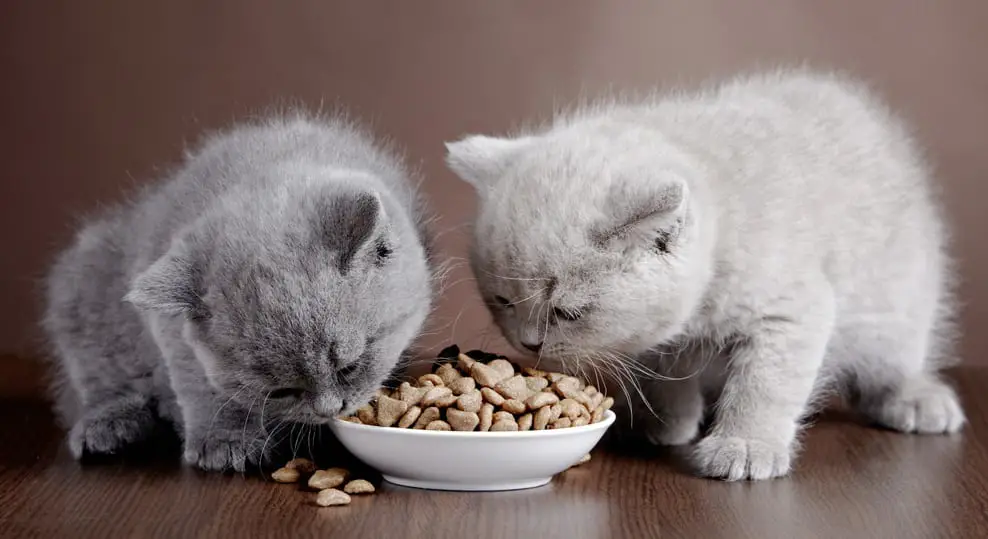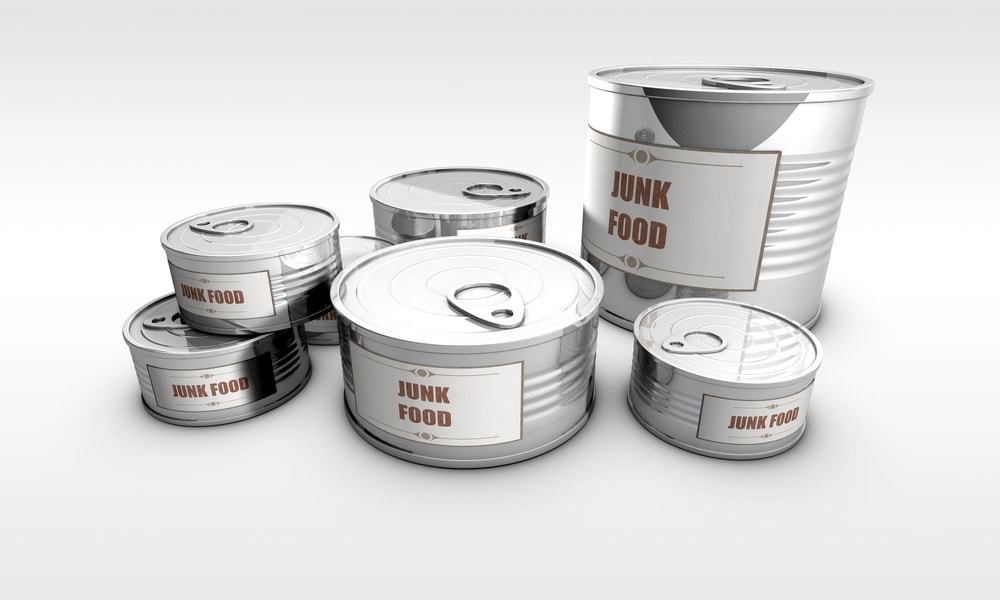A Guide to Understanding Cat Food Ingredients
Posted on Feb 17, 2017

What exactly is Ethylenediamine Dihydriodide, and why is it my my cat’s food?
If you’re feeding your cat a commercial food, chances are he’s getting a daily dose of some ingredients that read less like a food label and more like gibberish! While this guide is not all-inclusive, it defines the worst of the worst of the most commonly used ingredients in commercial cat and dog foods, explains their purpose for being there, and details the possible side-effects as a result of regular or continual ingestion.
Although many of these ingredients may be fine in the occasional treat or meal (many of them are in the processed foods we eat, too), cats are, more often than not, fed the same exact meal, day after day, year after year.
To many pet owners, this may (and should) read as a list of ingredients to avoid. When choosing the right food for your furriest friend, look for real named meats (rather than just the term “meat” which could include any variety of animal), whole ingredients, things you recognize. If there are more questions than answers when reading your pet food label, look elsewhere.

Common Pet Food Ingredients (Listed Alphabetically):
*Note: Several ingredients indicate that they may come from “4-D” sources. This means the ingredient can be legally sourced from Dead, Dying, Disabled, or Diseased sources – this can, and sometimes does, include animals that died of natural causes, disease, or were euthanized, and may explain the recent pet foods recalled due to the presence of the barbiturate Pentobarbital, also known as the euthanasia drug.
*Note: Several ingredients indicate that they may come from “4-D” sources. This means the ingredient can be legally sourced from Dead, Dying, Disabled, or Diseased sources – this can, and sometimes does, include animals that died of natural causes, disease, or were euthanized, and may explain the recent pet foods recalled due to the presence of the barbiturate Pentobarbital, also known as the euthanasia drug.
animal fat Non-descriptive source indicates 4-D fat chemically preserved, difficult to digest, potentially carcinogenic.
animal digest Rendered, by chemical and/or enzymatic process, non-descriptive animal tissues used for flavor.
beef tallow One of the worse kinds of fat, chemically preserved with potential carcinogen. Often produces allergies.
beef by-products Can include any internal part of the cow other than the meat, often from 4-D, rancid sources.
beet pulp Fiber/filler, stills contains enough sugar for rush/addiction to food and hyperactivity.
BHA (a preservative) Chemical. Highly carcinogenic preservative.
blue 2 An artificial coloring meant to enhance a food’s appearance. Offers no nutritional value. Carcinogenic.
bone meal (Non-digestible source of calcium can lead to digestive upset. Can be from 4-D sources.
brewer’s rice Waste product from breweries, cheap, non-nutritive filler can be harsh on intestines and lead to diabetes.
brewers yeast Waste product (used for flavoring, protein, B-vitamins) which can become very toxic to the liver causes allergies and arthritis.
brewers yeast extract (saccharomyces cerevisiae fermentation solubles) Liquid left over from brewery process, condensed. Can become toxic to the liver.
calcium chloride (Used as a source of calcium but can cause digestive upset, heart issues.
calcium propionate (a preservative) Chemical. Potentially carcinogenic, antifungal.
calcium sulfate Firming agent.
cellulose Harsh on bowels, suspected to include recycled cardboard. Can also be crushed peanut hulls.
chicken by-product Ground up carcasses, diseased internal organs, beaks and feet.
chicken by-product meal Ground up carcasses, internal organs, beaks, feet. Concentrated.
corn This controversial cereal grain typically used in pet food is feed-grade (not for human consumption) and can include mold or fungus. Corn is typically considered a cheap filler which is both difficult for dogs and cats to digest and can increase a pet’s blood sugar, leading to diabetes, weight gain, and joint dysfunction.
corn gluten Highly allergenic, adds sugar, is a poor protein source, interferes with digestion.
corn gluten meal Waste product, cheap, non-nutritive filler but used as protein source — can cause allergies and sugar imbalance.
corn oil (preserved with TBHQ) TBHQ contains petroleum-derived butane, can be carcinogenic.
corn starch Terrible filler, causes several health issues including allergies.
corn starch-modified Poor source of nutrients, protein, filler, binder.
dextrose Sugar, feeds cancer, causes hyperactivity, weight gain.
dicalcium phosphate Can become toxic to body — texturizer in can food.
DL-alpha tocopherol acetate Synthetic source, non-nutritive.
dried animal digest Flavor enhancer. Non-descriptive, or un-named animal digest is rendered animal tissue, including rancid or diseased parts.
dried beet pulp Waste product. Cheap filler/fiber-causes sugar rush/addiction to food, hyperactivity and allergies.
dried beet pulp (sugar removed) Waste product. Cheapest, most common filler used, still contains enough sugar residue to cause problems such as hyperactivity and blood sugar imbalances.
dried brewers yeast Can become toxic to liver, waste product of beer and ale industry.
dried capsicum Cayenne powder, can burn stomach.
dried cellulose Very harsh on digestive tract, suspected to include cardboard or peanut hulls.
dried meat by-product Can include tumors and diseased tissues, rancid trim pieces and innards of various animals.
dried plain beet pulp Pure sugar filler — leads to weight gain, hyperactivity and feeds arthritis.
dried whey Can encourage allergies, cheap protein source from cow’s milk.
egg product Cheap source of protein, waste product of egg industry, free of shell.
ethoxyquin (a preservative) The most carcinogenic preservative, most in industry have stopped using it except very cheap, poor quality foods.
fish oil (preserved with mixed tocopherols) Non-descriptive, cheap “fish” source, often rancid prior to preserving with Vitamin E (gimmicky to cover poor quality oil).
food starch Nondescript source can be from any grain, causes allergies, weight gain and poor digestion, cheap filler.
glycerin Sweetens food, used as humectant (keeps food moist), interferes with nutrient assimilation.
glyceryl monostearate An emulsifier (breaks down fats), lethal to lab rats, still under investigation by FDA.
glycine Non-essential amino acid used as antacid, indicates very poor quality food.
ground rice Filler — has been linked to diabetes, always indicates white rice, not whole grain but usually floor sweepings from rice industry.
hydrochloric acid Corrosive ingredient used as modifier for food starch, gelatin, as a pH adjuster and conversion of corn starch to syrup.
iron oxide Can be cultivated from rust.
L-alanine Non-essential amino acid used as supplement in heavy grain-based foods, known carcinogen in lab mice.
L-lysine monohydrochloride Poor source of Lysine (essential amino acid found in meat), cheaper to use for food enrichment for grain-based foods.
lamb by-product Can contain everything internal but the muscle meat including diseased tissue, tumors, etc.
lysine Indicates heavy soy-based food which dogs can die from unless they have lysine to help digest it, best to avoid this diet unless soy is missing.
magnesium oxide Has caused tumors in lab rats, antacid.
manganous oxide calcium iodate Often used in bleaching tallow.
meat and bone meal (natural source of calcium) Non-descriptive indicates 4-D meat, cheapest source, can include diseased tissues plus bone meal can not be digested and assimilated as calcium.
meat and liver meal Can include tumors and diseased tissues, rancid trim pieces and liver of various animals, concentrated.
meat by-products Non-descriptive indicates 4-D meat, cheapest source, can include diseased tissues (tumors) and organs.
menadione dimethylpyrimidinol bisulfite Least beneficial source of Vitamin K activity needed for proper blood clotting.
monosodium phosphate Used as emulsifying agent.
natural and artificial flavors Poor quality of flavor additive, artificial flavors can be carcinogenic.
partially hydrogenated soybean oil Causes digestive upset, premature aging.
peanut hulls 10.8% (source of fiber) Can harm the digestive tract, cheap fiber.
petrolatum Mild laxative effect when ingested. Petroleum is a carcinogen.
phosphoric acid A sequestering agent for rendered animal fats — implies poor quality fats are used, source of phosphorous.
poultry by-product meal Ground up carcasses, can include dead, diseased foul, all internal parts void of healthy meat, includes feet and beaks, concentrated.
powdered cellulose Cheap filler/source of fiber, suspected to include cardboard, causes irritable bowel problems.
propionic acid (a preservative) Potentially harmful mold inhibitor.
propylene glycol Adds sweetness to food, used in some antifreezes. Some preservative action, possible carcinogen.
propyl gallate and citric acid Chemical preservative, can cause digestive upset, stomach irritation, deceptive adding with natural Vitamin C.
rice flour Cheap filler, causes bowel distress and can lead to diabetes in dogs.
rice gluten Can encourage diabetes, a poor protein source/filler.
rice hulls Cheap filler, can be harsh on intestines.
rabbit by-products Includes tumors, ears, carcass, etc.
red 3 Carcinogenic color.
red 40 Artificial color, carcinogenic.
smoke flavor Indicates flavor which can potentially become carcinogenic, retards bacteria on rancid meat.
sodium bisulfate Used as disinfectant.
sodium carbonate Neutralizer for rancid fats, similar to lye.
sodium chloride Table salt — flavor enhancer, preservative, used to cover up rancid meat and fat, can cause kidney and heart disease, hypertension — used to encourage cats to drink.
sodium hexametaphosphate Cheap source of phosphorus can become deadly to dogs — emulsifier, texturizer.
sodium nitrite (for color retention). Potentially highly carcinogenic.
sodium phosphate Non-digestible source of phosphorous (vital to maintaining acid/alkalinity pH).
sodium tripolyphosphate Used as rancid meat preservative.
sorbic acid (a preservative) A mold and yeast inhibitor.
sorbitol Sweetener and binder.
soybean hulls Cheap filler, harsh on intestines.
soybean mill run This is the sweepings off the floor-cheap filler, poor source of protein.
soy flour Cheap source of grain protein, filler, can cause bloat/death in dogs.
starch Cheapest form of carbohydrates causes weight gain and poor digestion, filler.
tallow Causes poor health, disrupts digestion, can include rancid restaurant grease. Very bad fat source.
tetra sodium pyrophosphate rust stain remover used in cleaning products. Used in pet food for emulsification of rendered animal fats. Very toxic, causes nausea and diarrhea.
thiamine hydrochloride Cheapest, poorly assimilated source of Thiamine, Vitamin B-1, needed for nervous system and mental attitude.
titanium dioxide Potentially carcinogenic artificial color used as white pigment.
trace minerals (potassium chloride) Source of potassium to balance pH, small intestinal ulcers may occur, indicates lack of well-rounded supplementation.
trace minerals (sodium tripolyphoshate) Cheap, potentially harmful source of phosphorous indicates lack of well-rounded supplements.
wheat bran Indicates poor quality food, can cause allergies, best to have whole wheat.
wheat flour Poorly digested filler, can cause allergies and bowel problems.
wheat gluten Poor protein source, used as a cheap, non-nutritive filler — causes allergies.
wheat middlings Sweepings off the floor causes allergies and digestive upset.
wheat mill run Sweepings off the floor, causes allergies, digestive upset and feeds arthritis, leads to premature aging.
wheat starch Poor carbohydrate source causes allergies.
yeast culture Flavoring, source of protein, potentially toxic to the liver.
yellow 5 Artificial color, a salicylate which can be become deadly to cats with extended use.
yellow 6 Artificial color, potentially carcinogenic food colorant.
Take a look at your own pet food labels and compare. How many of these common ingredients did you find? Are you comfortable with the explanation for why it’s there?
Did you find any unusual or hard-to-pronounce ingredients not listed above? Leave a comment below and we’ll research that ingredient and add it to the list.
Many pet owners complain that the industry doesn’t always have our pet’s health and vitality as their top priority. And, while this may be true in some cases, it’s ultimately up to us, as pet parents, to make the best choices when it comes to our companions. And, when enough of us are educating ourselves and making better choices, the industry will be left with no option but to follow our lead.